As Davos proceeds, “aylites” everywhere might take a moment to consider what they’ve wrought. After all, let’s recall a moment what was noted in 2011 by Bloomberg in the story The lonliest man in Davos:
As politicians, executives and financiers networked at parties and panels last week in Davos, Switzerland, Barrie Wilkinson was in a nearby hotel, warning that a 2015 financial catastrophe may be looming.
“The fundamentals haven’t been addressed at all,” Wilkinson, a London-based partner at consulting firm Oliver Wyman, said in an interview at the Hotel Morosani Schweizerhof. “The things that caused the previous crisis — loose monetary policy and trade imbalances — they’re actually bigger now than they were then.”
In the caste system of the World Economic Forum’s annual event in the Swiss ski resort, Wilkinson was at a bottom rung, with an identification badge that denied him access to most sessions and soirees. His message clashed with the optimistic tone of many at the center of the meeting, who were eager to emphasize the progress made after two years of hand-wringing in the wake of the 2008 financial crisis.
“The systemic reforms that have been accomplished are significant,” Canadian Finance Minister Jim Flaherty said as he left a private meeting with finance company chief executive officers on Jan. 29. “We need to communicate better that financial institutions globally are operating on a very different basis today, that they are operating with higher capital and are better regulated.”
Wilkinson’s report, titled “The Financial Crisis of 2015: An Avoidable History,” isn’t so sanguine. The 24-page study describes how banks, unwilling to accept the lower returns on equity, or ROEs, that result from higher capital requirements, may fuel a new bubble by chasing high returns in commodities or emerging markets. Regulators, by focusing their restraints on banks, may drive risk-taking into unregulated funds that also pose danger to the system.
And so it is. Last night the Mining GFC rocked global markets. The US dollar was firm:
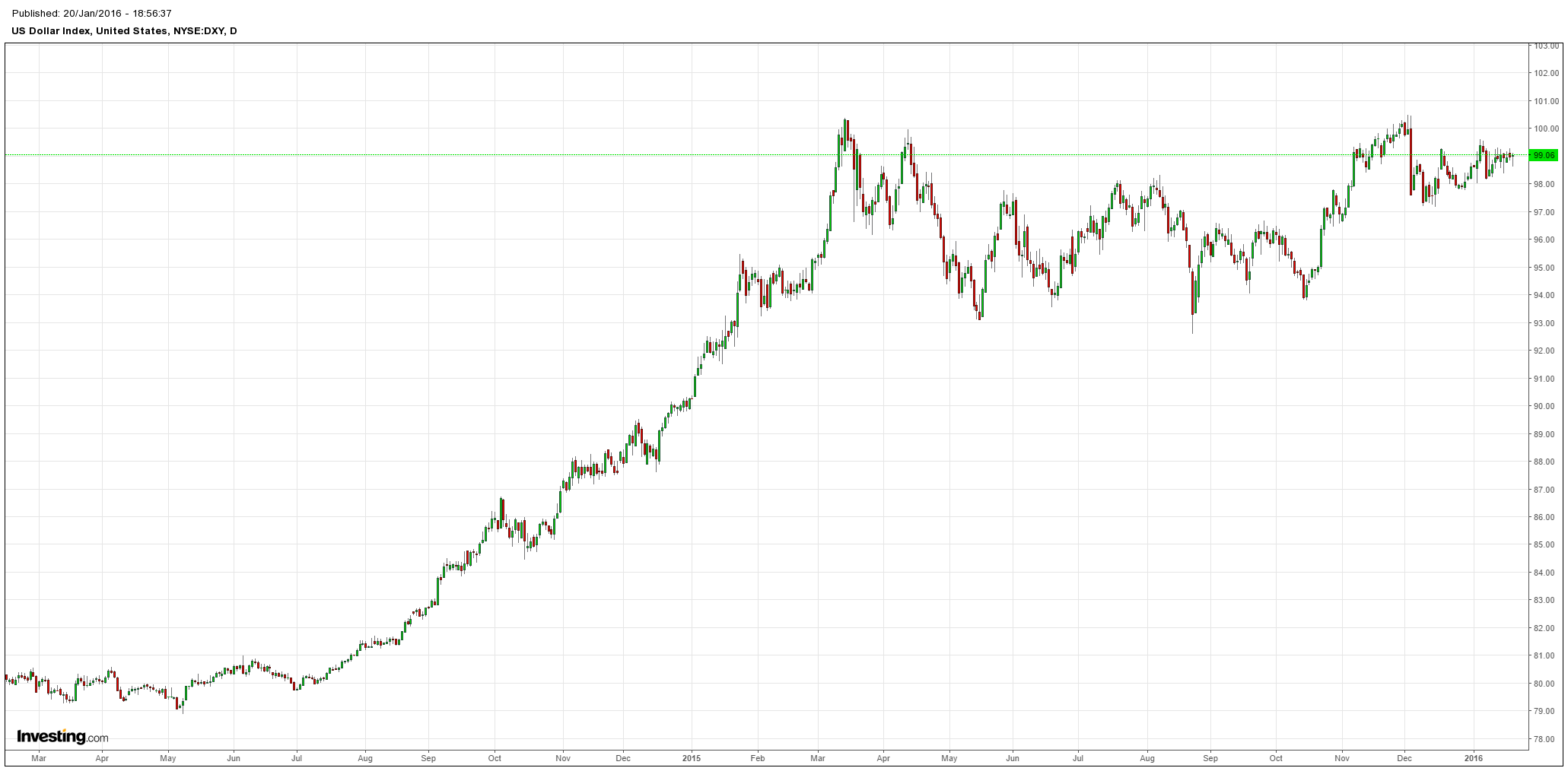
Brent oil crashed again (though then rallied from its lows):
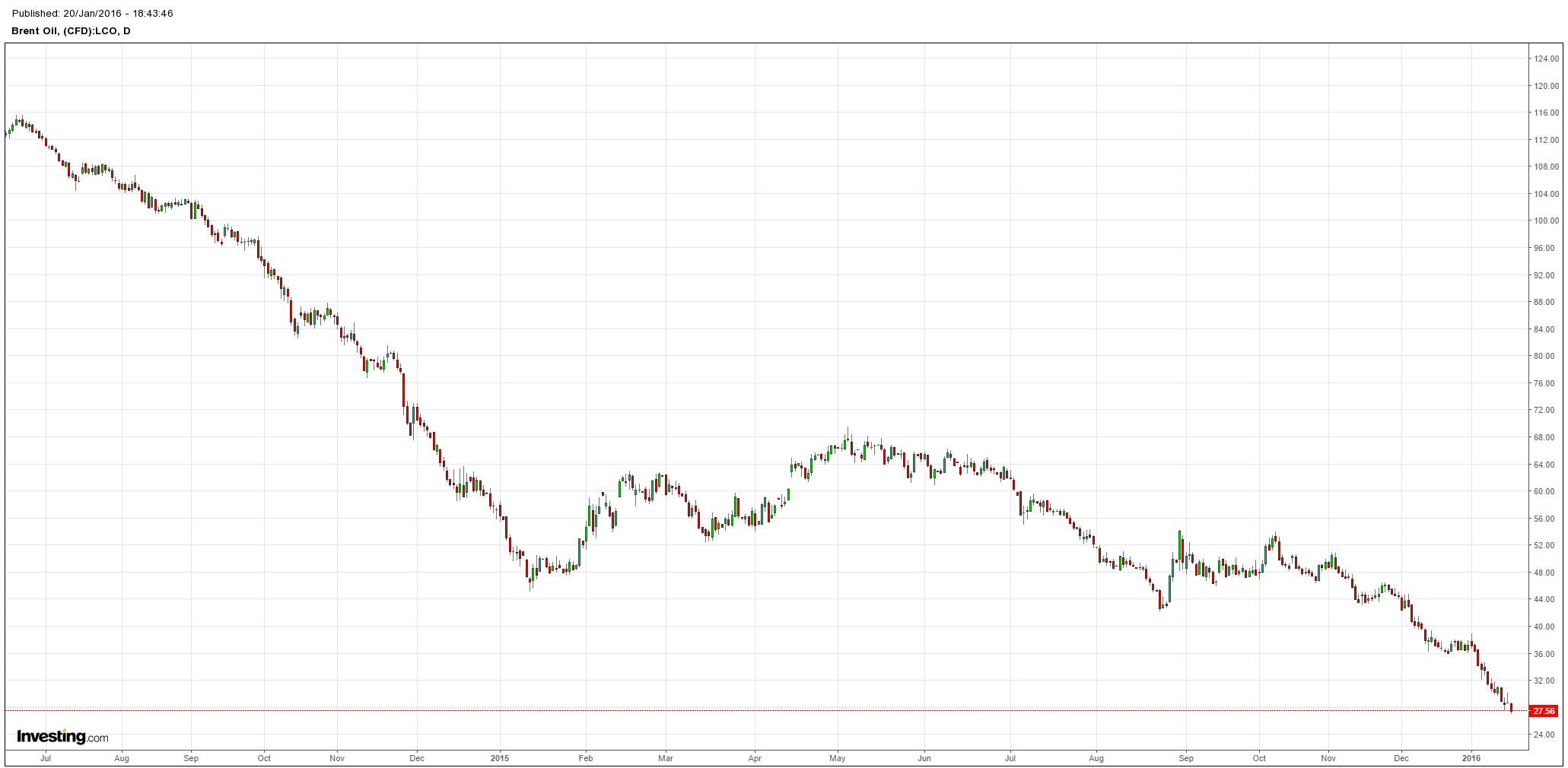
Base metals held up:
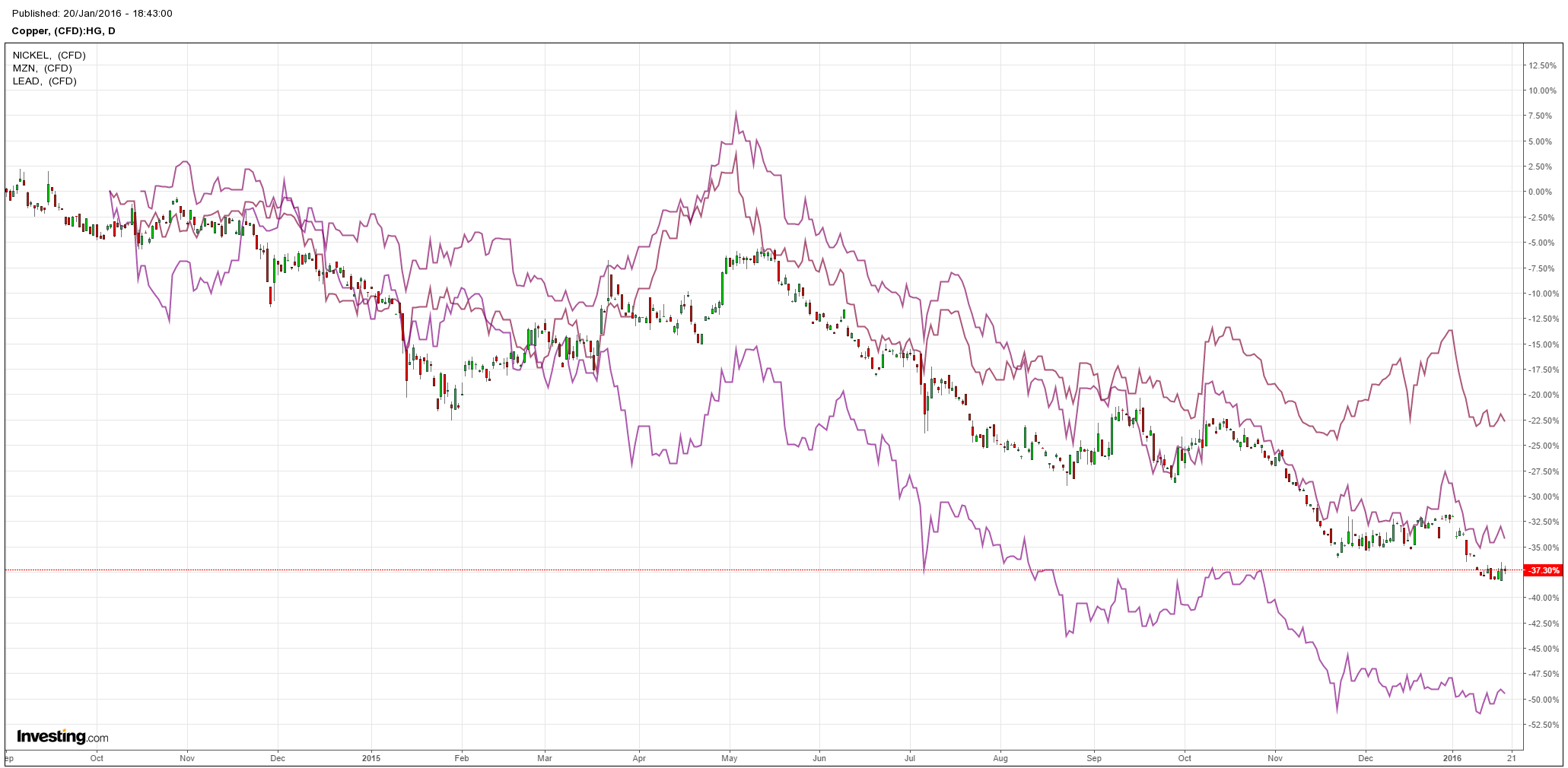
But miners didn’t:
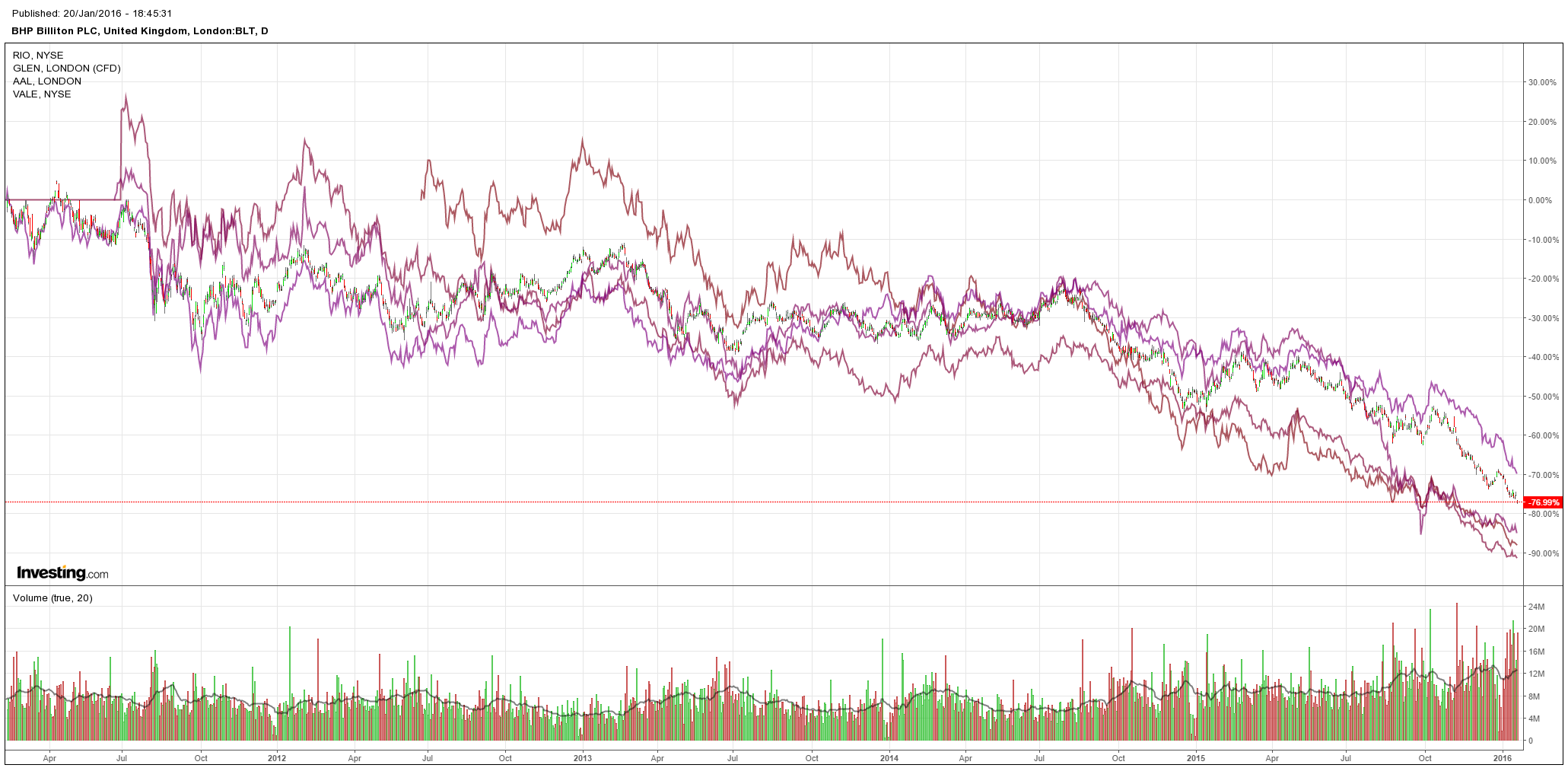
Global stocks entered a bear market down 20% from their top (S&P500 also rallied back):
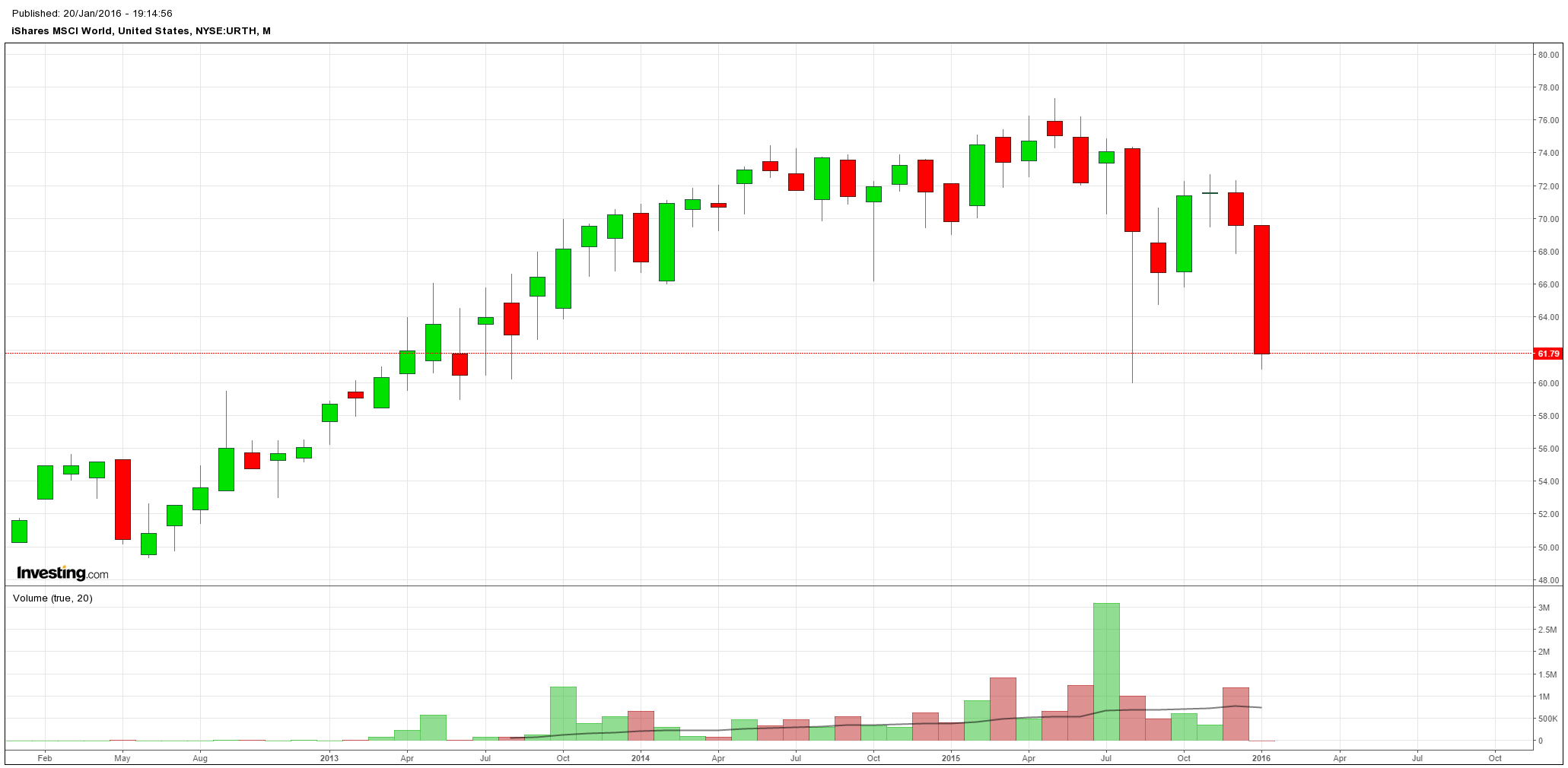
Commodity currencies were flogged though EMs tore away from DMs and the Aussie was mysteriously calm:
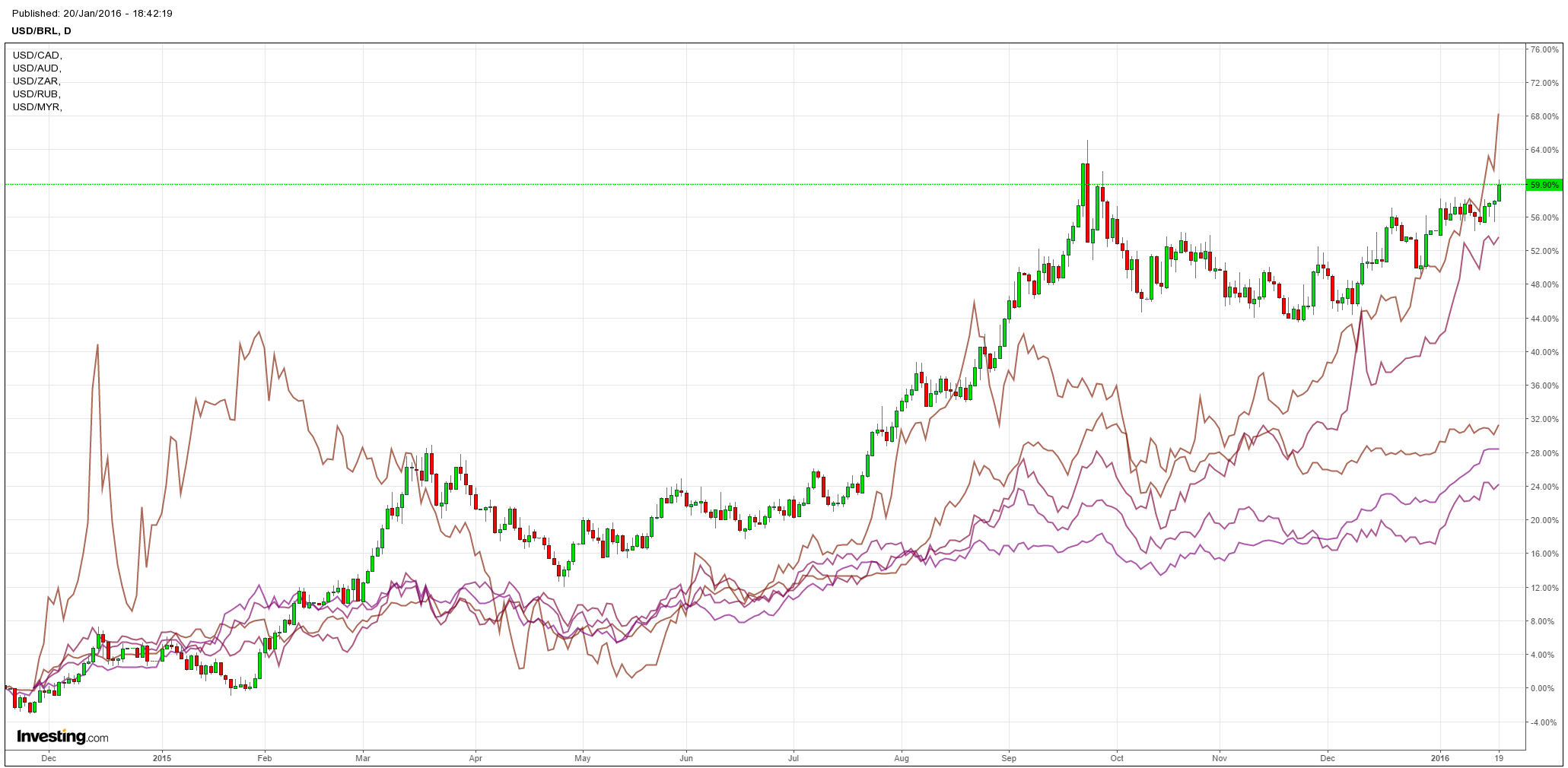
And high yield debt crashed in the US though EM was less awful:
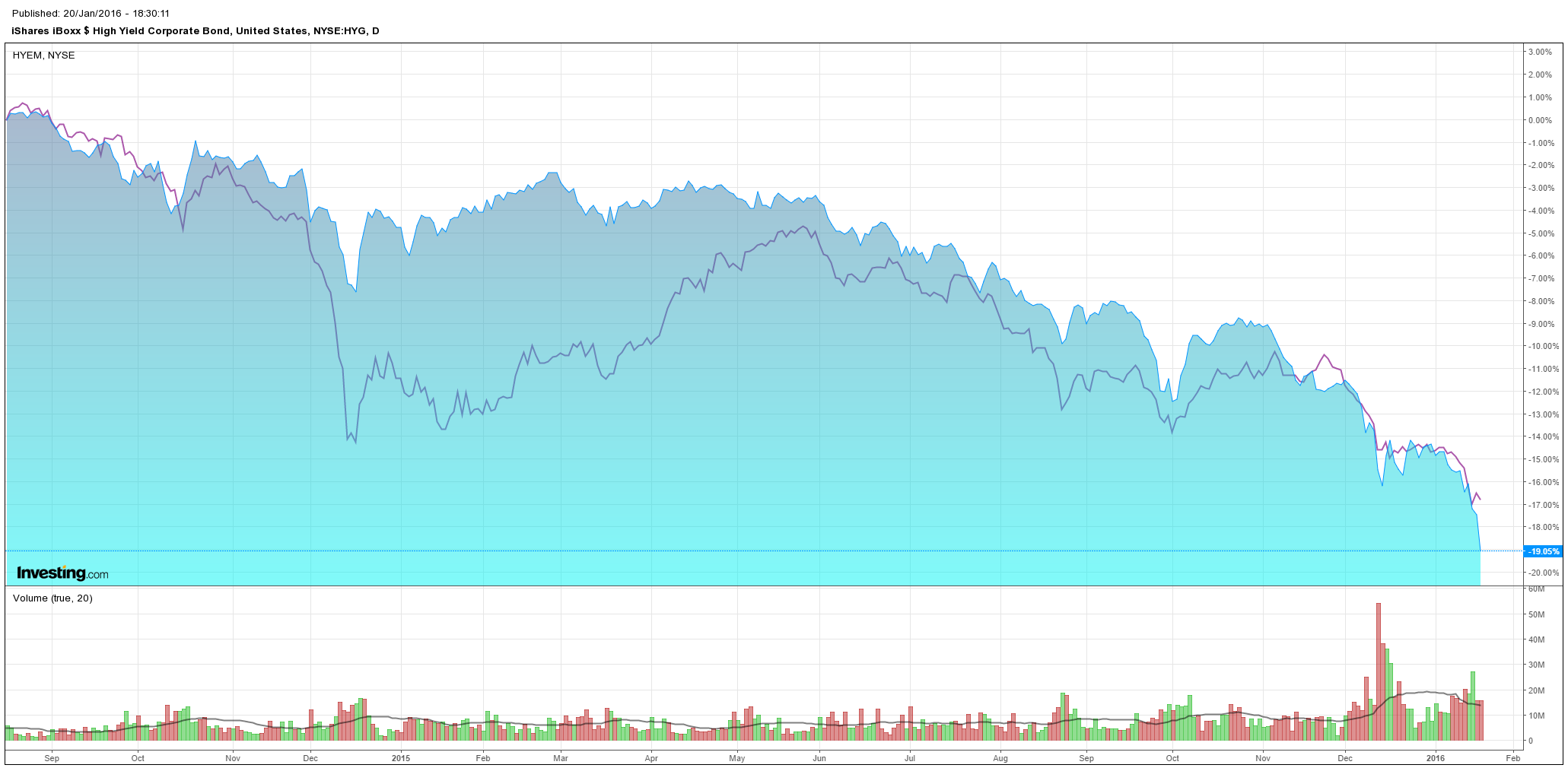
The longer term chart shows the word “crisis” is hard to avoid:
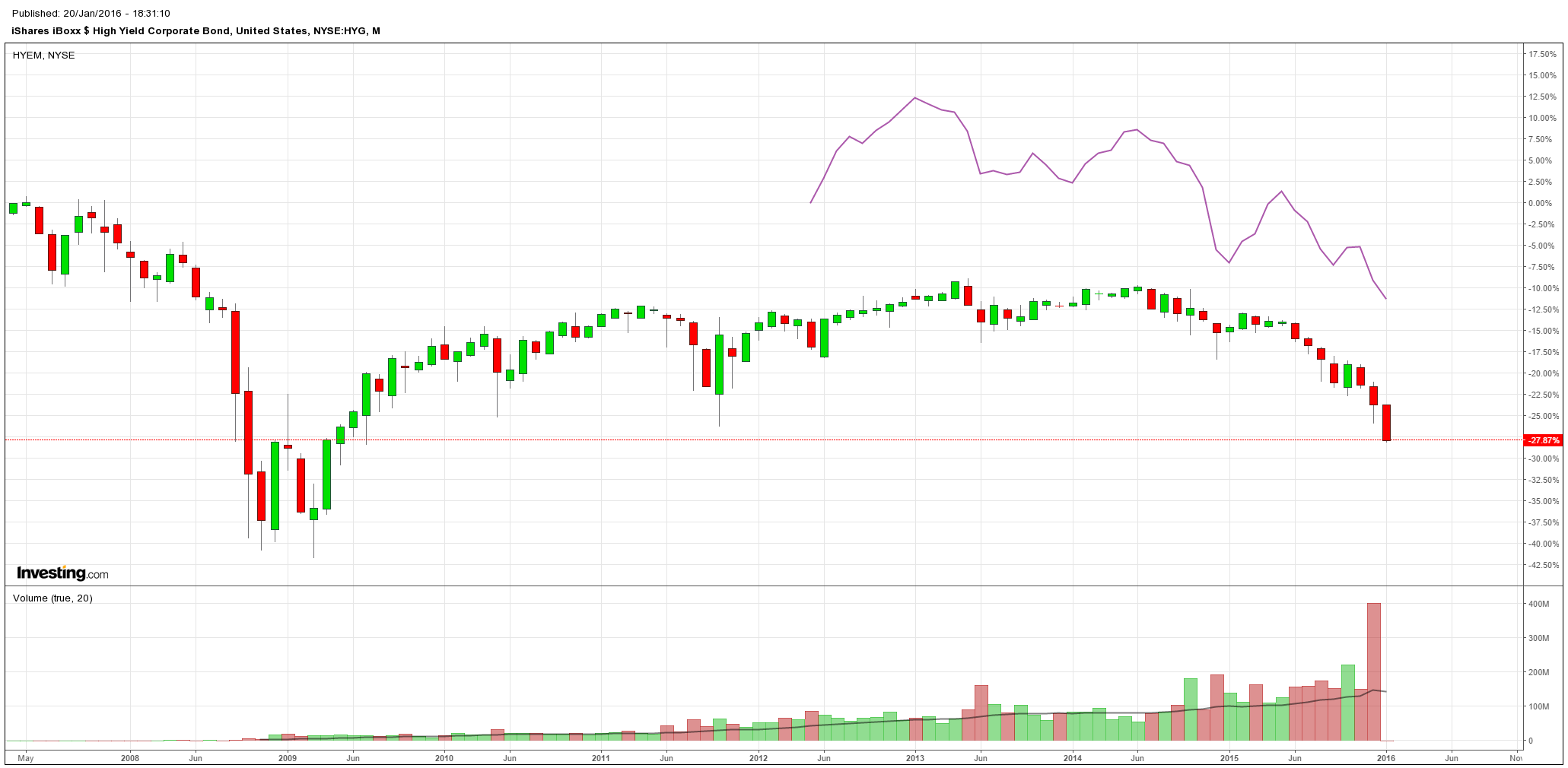
US bonds were bid:
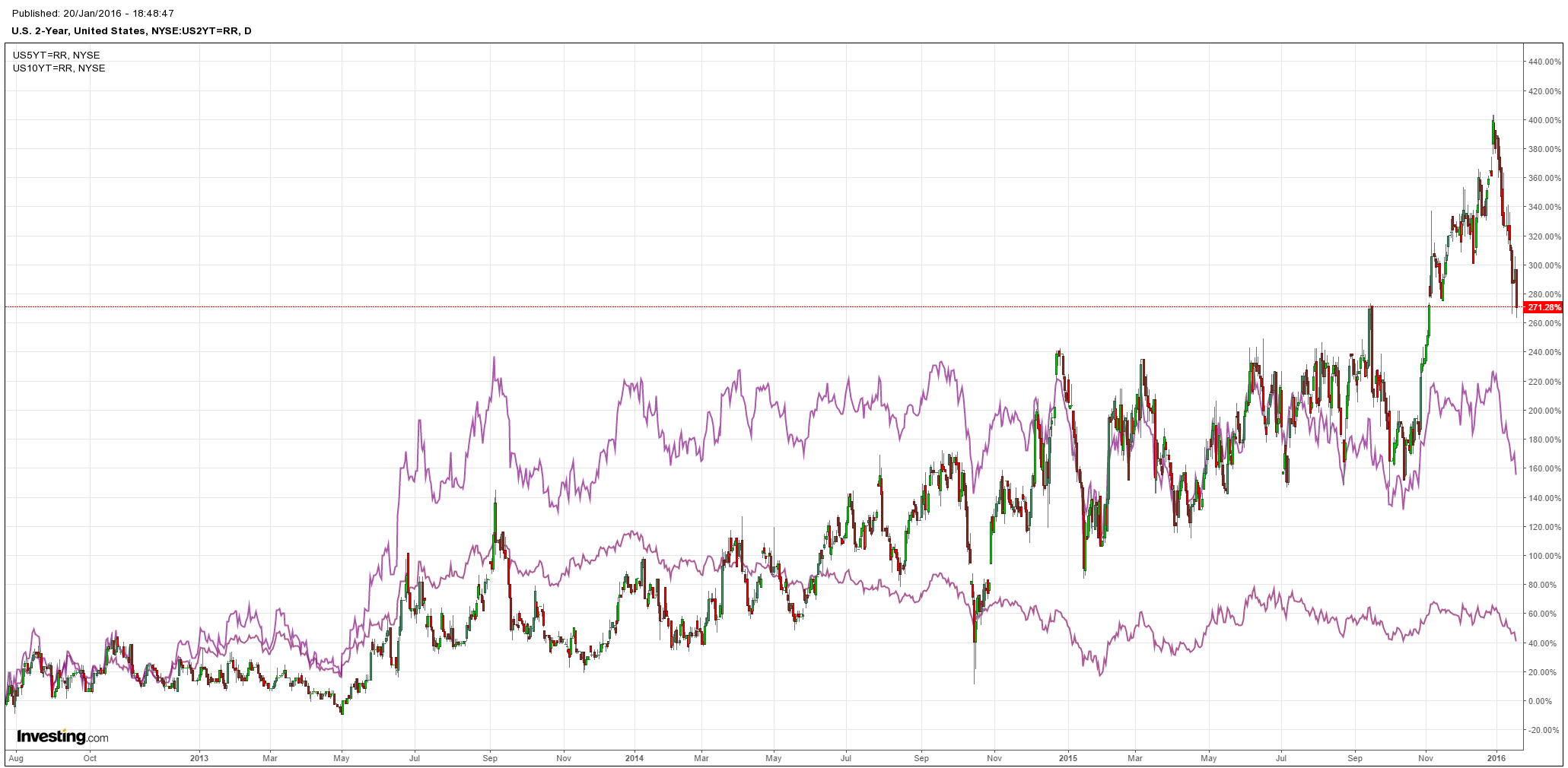
The Aussie short end priced half of the next rate cut:
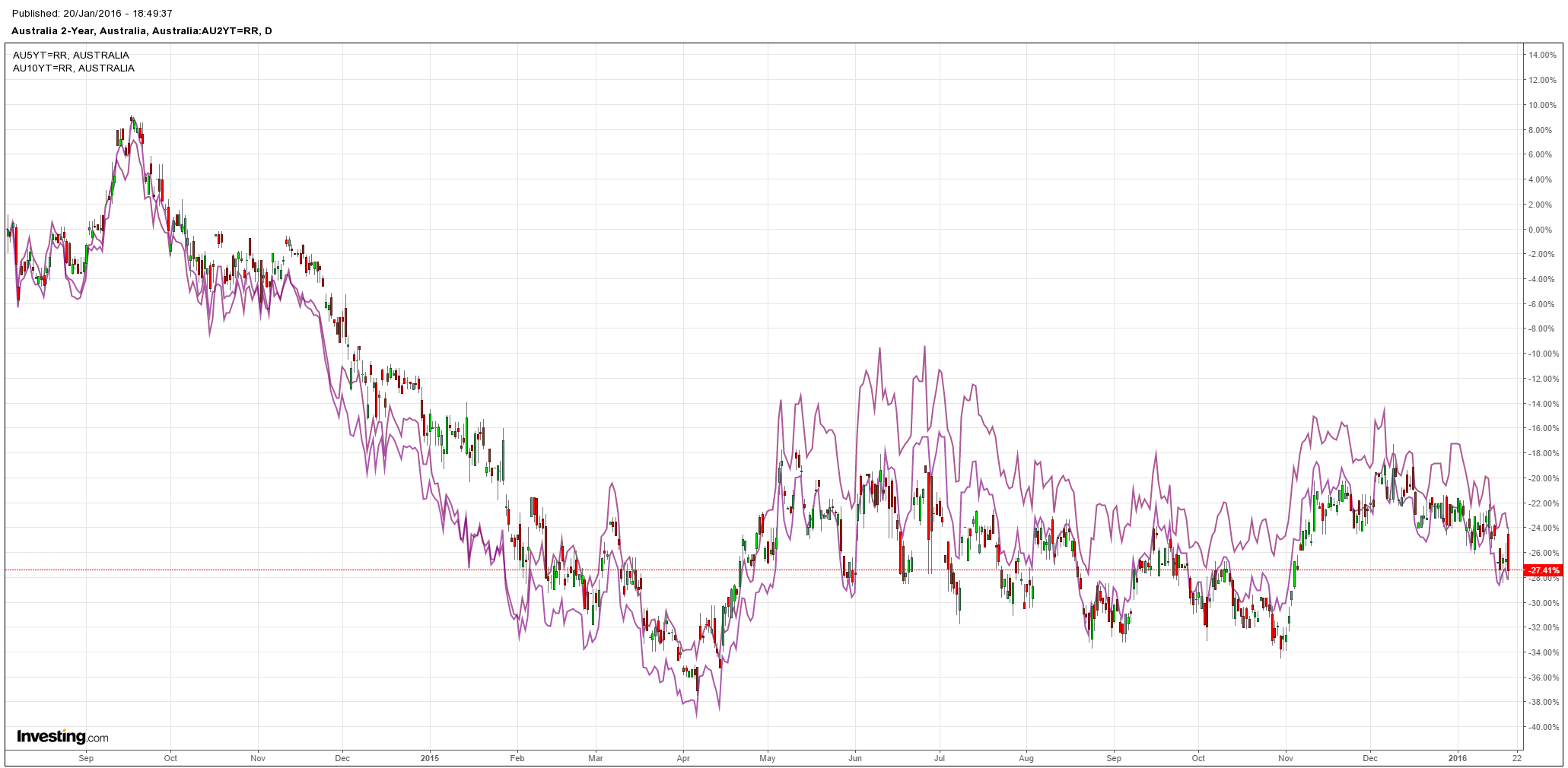
And gold rallied, though in the grand scheme of things so far it is miniscule:
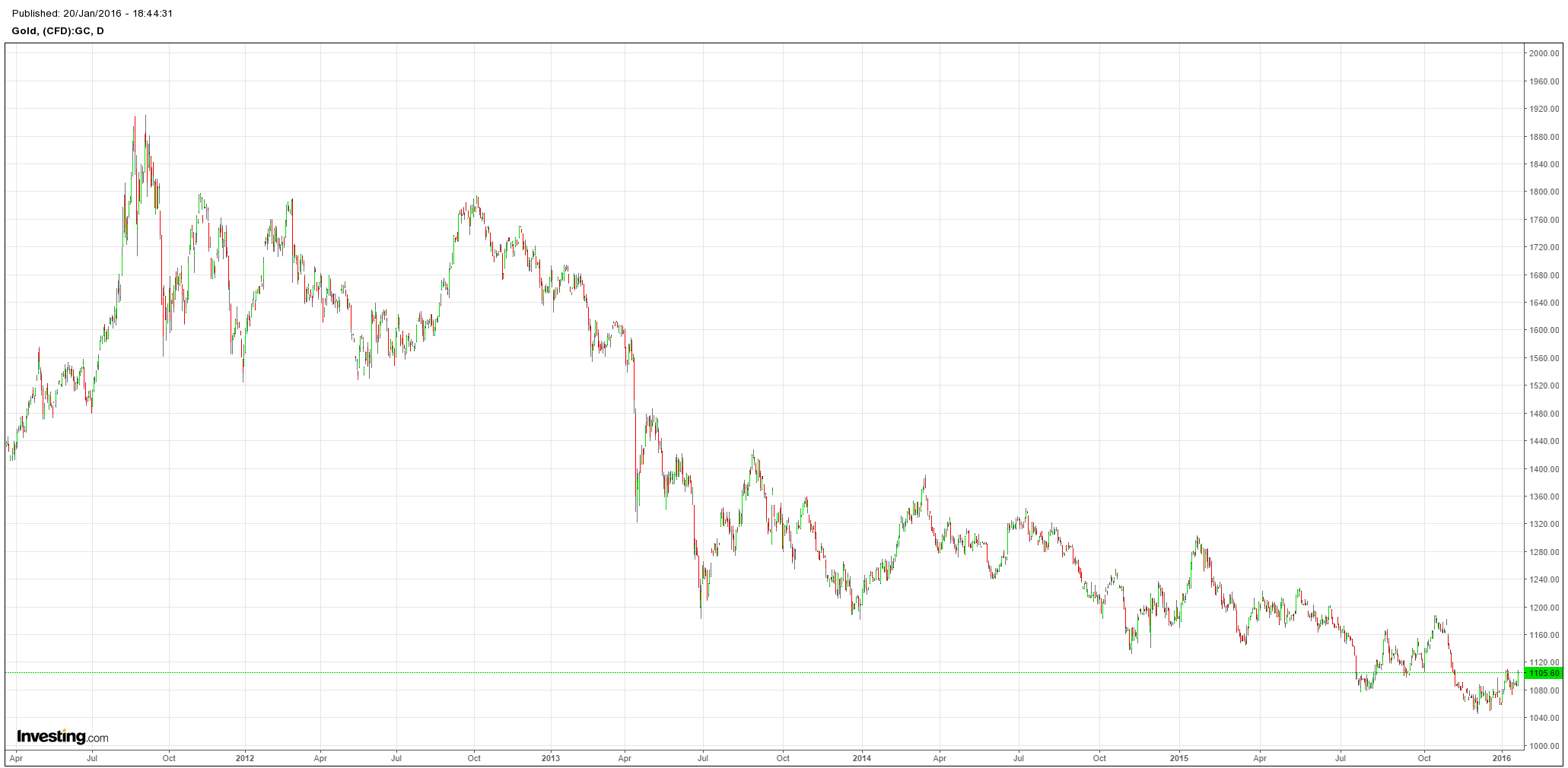
That rather suggests that we are still a long way from any Fed rescue though it is most certainly coming. The problem is the FOMC is also sinking. Let’s go full circle and close with Ray Dalio at Davos who captures it all nicely: